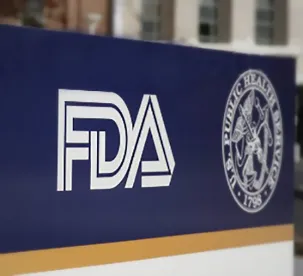On Dec. 31, 2020, the Food and Drug Administration issued Guidance to answer questions about its April 12, 2019 Final Rule for consumer-based antiseptic hand sanitizer rubs (Hand Sanitizers). The Guidance addresses (1) the fate of active ingredients ethanol, isopropanol, or benzalkonium chloride and (2) the ban on all other active ingredients. Companies formulating Hand Sanitizers with ethanol, isopropanol, or benzalkonium chloride do not need to get FDA approval through its still-yet-to-be-formalized OTC Drug Review process. Stakeholders need to know, however, that this position is subject to change as FDA implements the Final Rule.
The safety and efficacy of Hand Sanitizers has been a point of contention between industry and FDA since the 1970s. FDA last systematically evaluated scientific data regarding Hand Sanitizers in 1994. Even then, FDA recognized that there were gaps in the data regarding formulations, safety, and efficacy. Regardless, FDA determined that there were 31 active ingredients permitted to be marketed under FDA’s June 17, 1994 Tentative Final Monograph.
Finding a lack of studies showing that they were “generally recognized as safe and effective,” or “GRAS/E”, the FDA’s April 12, 2019 Final Rule formally banned 28 of the 31 active ingredients in consumer-based antiseptic hand sanitizer rubs. The ban was deferred for a year. This meant that Hand Sanitizers formulated with one or more of 28 specific active ingredients had until April 13, 2020, to be removed from the market. The permitted active ingredients were ethanol, isopropanol, and benzalkonium chloride.
Hand Sanitizers with ethanol, isopropanol, or benzalkonium chloride could remain on the market while the interested parties completed studies necessary to submit safety and effectiveness data. Originally, the FDA gave interested parties until April 13, 2020, to submit the studies before the FDA would promulgate a final rule on the three active ingredients. But no rule has come yet.
The Dec. 31 Guidance reiterates that the banned 28 active ingredients should have been removed by April 13, 2020. Fortunately, or unfortunately, the impact was not as great as expected, since the COVID-19 health emergency left a dearth of Hand Sanitizers with those active ingredients. More importantly, it appears that FDA is extending its review period – the Guidance clarifies that FDA is still accepting safety and efficacy studies, although it is well past the original April 13, 2020, due date. Regardless, the Dec. 31 Guidance reiterates that FDA needs to see safety and efficacy studies and that the window to formulate the hand sanitizer under the 1994 Tentative Final Monograph is closing. FDA could tighten the permissible concentration limits of the active ingredients or – though unlikely – place an all-out ban on monograph Hand Sanitizers. If there are changes, FDA could defer the changes for a year so that companies can adjust. Manufacturers and other stakeholders relying on the 1994 Tentative Final Monograph should closely monitor for FDA updates, rules changes, and FDA Antiseptic Letters.



 />i
/>i

